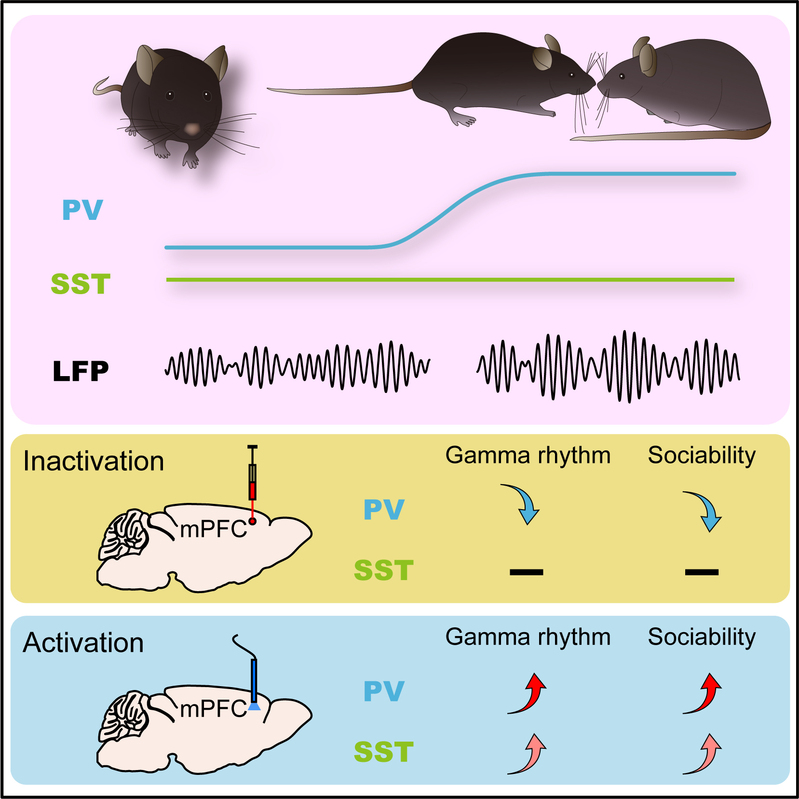ZJU scientists discover the “Golden Baton” for regulating social interaction
Cortical network activities underlying normal human behaviors depend for the main part on an exquisite interplay between excitation and inhibition.
In recent years, the research team led by Prof. XU Han at the Zhejiang University School of Medicine has been committed to fundamental research into the neurological mechanism for social behaviors and social dysfunctions. They discover the cell type-differential modulation of prefrontal cortical GABAergic interneurons on low gamma rhythm and social interaction. This not only deepens the understanding of social interaction but also opens the door to treating such neuropsychiatric disorders as autism. Their findings were published in an open-access article titled “Cell type–differential modulation of prefrontal cortical GABAergic interneurons on low gamma rhythm and social interaction” in the journal of Science Advances on July 22.
People engage in a wide spectrum of social activities in 80% of their waking hours. Social behaviors, as the cornerstone of daily life, are essential to the growth and well-being of every individual. Unfortunately, social dysfunctions are commonly observed in many neuropsychiatric disorders, including autism, depression, schizophrenia and social anxiety disorder.
Scientists have conducted a massive body of research into excitatory neurons, but the role of inhibitory neurons has remained elusive in that inhibitory neurons are less numerous than excitatory neurons in cortex, consisting of about 10–20% of all neurons. Moreover, there has been a paucity of effective approaches to identifying specific types of inhibitory neurons and recording their activities, and it has also been a challenging task to know about the network computation of these neurons in the control of social behaviors.
Thanks to a broad range of cutting-edge technologies, such as genetically-modified mice implanted with specific types of inhibitory neurons, in vivo multi-pathway recording, optogenetics and pharmacogenetics, researchers are able to record these neurons directly and study their crucial role in social interactions.

Prof. XU Han et al. conducted in-depth research into two specific populations of inhibitory neurons—prefrontal parvabumin (PV) interneurons (INs) and somatostatin (SST) INs, during social interaction in mice.
Researchers discovered that social interaction is closely bound up with elevated gamma rhythms particularly at low gamma band (20-50 Hz). Low-gamma rhythms were found to orchestrate network computations essential for the cortical control of social interaction behaviors.
“PV INs can be compared to a conductor who directs the performance of an orchestra to play euphonious and melodious music,” said XU Han.
Then what role do SST INs play in social behaviors?
No conspicuous change was observed in discharge rates in SST INs in the process of social interactions in mice, and inhibition of SST INs produced no impact on social behaviors and the power of gamma oscillations. Interestingly enough, activation of SST INs at low gamma frequency enhanced low gamma power and produced a prosocial effect. This finding suggested that in addition to PV INs, SST INs might also function as a therapeutic target for social impairments commonly observed in social disorders.
